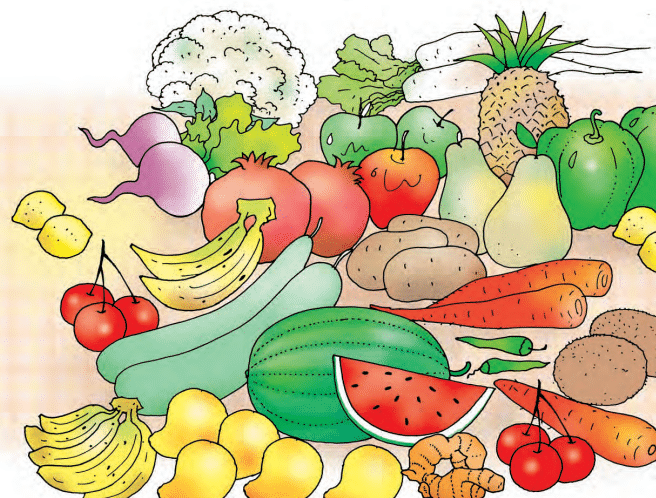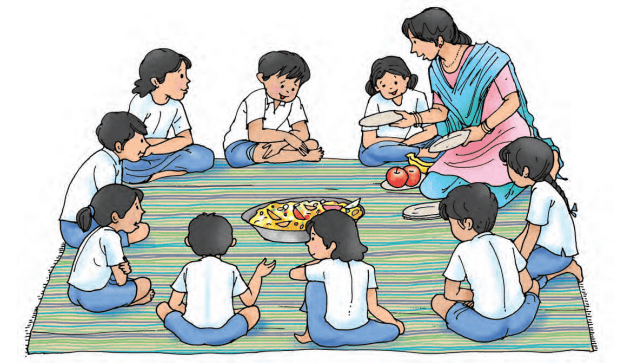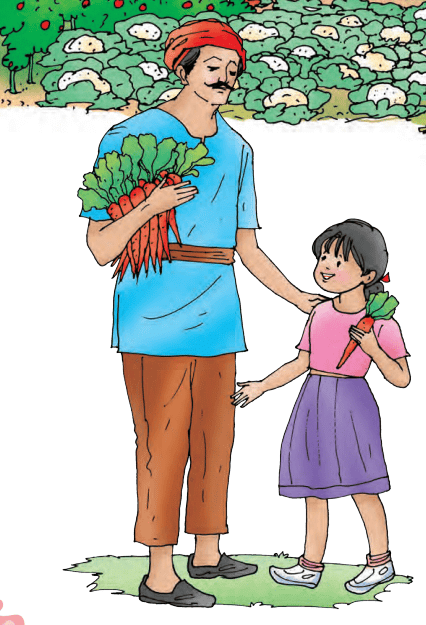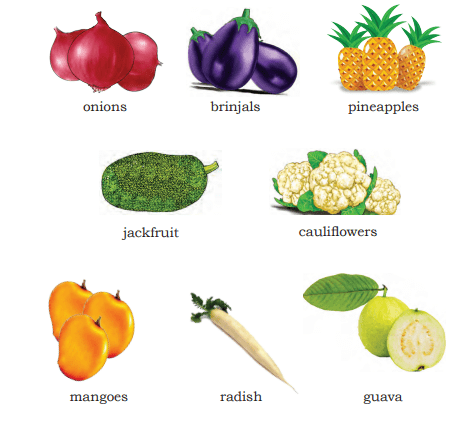Summary: Fun with Pictures | English for Class 1 (Mridang) PDF Download
| Table of contents |

|
| Introduction to Fun with Pictures |

|
| Summary of Fruits for All |

|
| Summary of A Visit to the Market |

|
| Conclusion |

|
Introduction to Fun with Pictures
The chapter "Fun with Pictures" helps children learn about fruits and vegetables in a fun way. You will see pictures, read poems, and do activities. In this chapter, you will learn the names of different fruits and vegetables, count them, and know their colors. You will also learn how to share with others. There are fun exercises and stories that help you understand new words, numbers, and the importance of being kind and sharing.
 Fruits and Vegetables
Fruits and Vegetables
Summary of Fruits for All
- The poem "Fruits for All" is about sharing fruits from a tree.
- In the first part, there are five red apples on the tree. These apples are shared with different friends—a traveler, a bird, a squirrel, a rabbit, and one apple is for you to share with a friend.
- In the second part, there are five yellow mangoes on the tree. The mangoes are shared the same way—with a traveler, a bird, a squirrel, a rabbit, and one for you to share with someone.
- This poem helps us learn about sharing and teaches us to count fruits.

Summary of A Visit to the Market
- Mini’s father is a farmer who grows vegetables on their farm and sells them at the market. Every Saturday, Mini accompanies him to the market, where many people are busy buying fruits, vegetables, flowers, and toys.
 Mini and her father
Mini and her father
At the market, Mini admires the beautiful flowers, including roses, marigolds, and jasmine. Her father tells her the names of these flowers. They also explore a variety of fruits, such as red apples, pineapples, oranges, and a large green watermelon. After their exciting visit, Mini holds a basket filled with flowers while her father carries a bag of fresh fruits as they head home together.
Conclusion
In conclusion, the chapter "Fun with Pictures" makes learning about fruits and vegetables an enjoyable experience for children. Through colorful pictures, engaging poems, and interactive activities, young learners discover the names, colors, and counting of different fruits and vegetables while understanding the importance of sharing with others.
 some f
some f
The poem "Fruits for All" beautifully illustrates the joy of sharing by depicting how apples and mangoes are shared among friends, teaching valuable lessons about generosity. Similarly, the story "A Visit to the Market" follows Mini as she explores the vibrant market with her father, deepening her understanding of various fruits and flowers while enjoying quality time together.
Both the poem and the story encourage kindness, curiosity, and appreciation for nature's bounty. By engaging with these lessons, children not only enhance their vocabulary and counting skills but also learn the importance of sharing and enjoying experiences with family and friends.
|
27 videos|219 docs|34 tests
|
FAQs on Summary: Fun with Pictures - English for Class 1 (Mridang)
| 1. What is the main theme of "Fun with Pictures"? |  |
| 2. How does "Fruits for All" contribute to the overall message of the article? |  |
| 3. What can readers learn from "A Visit to the Market"? |  |
| 4. Why is the conclusion important in "Fun with Pictures"? |  |
| 5. How can "Fun with Pictures" be used as an educational tool? |  |




















